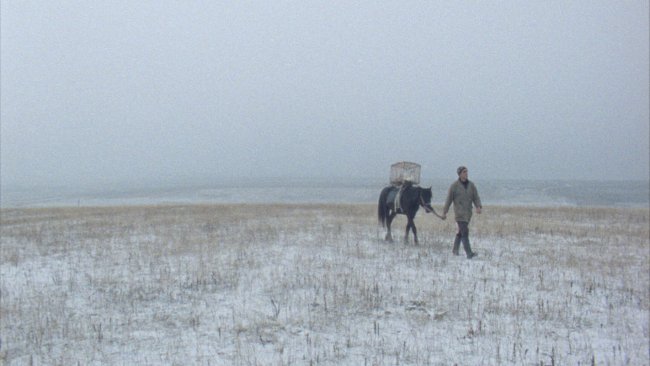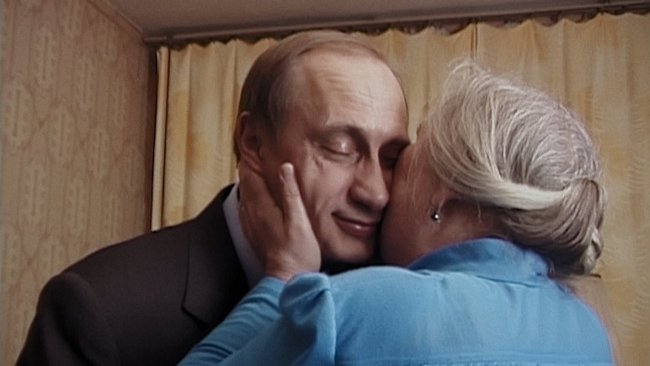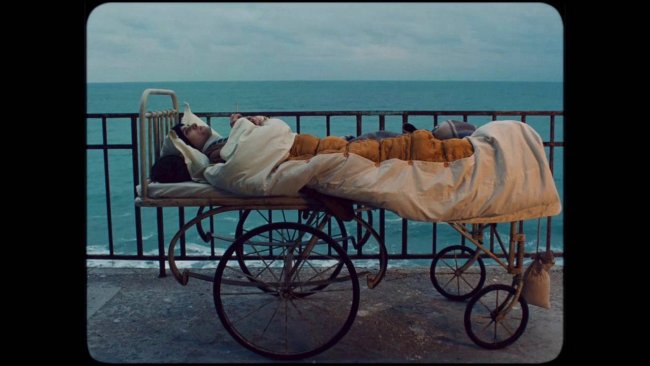Ala Eddine Slim | Tlamess
[...] Slim is not charting new cinematic territory but, instead, paying tribute to his medium: the screen. His feature has a lot of potential as an essay on light and dark, sound and silence, and spaces both open and closed.
[...] Collaborating with electronic band Oiseaux-Tempête on the soundscapes and with director of photography Amine Messadi on the visuals, Slim has produced a richly textured and hyper-sensual work which truly merits the theatrical experience.
[...] Focusing on oppressed minorities (refugees, soldiers, women) who traverse environments both habitable and hostile, Slim draws from silent cinema just as much as he draws from video games.
Text: Laura Davis | Audio/Video: Jorge Cadena
Premiering at Cannes’ Quinzaine des Réalisateurs is Ala Eddine Slim’s Tlamess. The experimental Tunisian filmmaker’s previous feature The Last of Us took home the Luigi De Laurentiis Award from the 2016 Venice Film Festival before travelling to many other festivals. Tlamess picks up on many of The Last of Us’ preoccupations but is less of a socio-political comment and more a work that pays homage to the theatrical experience.
Although the Tunisian word “tlamess” means enchantment, the feature starts out whole-heartedly disenchanted. The film begins with two soldiers questioning the forms of state terrorism they are implicated in. Within several minutes we witness a graphic suicide before promising lieutenant “S” (played by poet and musician Abdullah Miniawy) is called into the general’s office to be told that his wife has suddenly died. The grief becomes too much and he illegally flees the military encampment. Tunisia’s most wanted man, he retreats to the forest.
We then meet “F” (Souhir Ben Amara), a desperately unhappy housewife who has just learnt she is pregnant. F spends her days coating her fingernails in nail varnish only to wipe them clean again while her absent husband jets off to business meetings on the other side of the world. Her glasshouse in the forest is complete with all the mod-cons, including a Buddha imported from the other side of the world and barely out of its bubble wrap packaging. Her husband does not bat an eyelash at the revelation of her pregnancy. With this frustration, she ventures into the forest only to encounter S. My guess is that this is what the title refers to: the protection and nourishment of the wilderness in contrast to the surveilled, hostile space of the city.
For the most part, Tlamess is quite a cold take on humanity. Without much dialogue, it is hard to feel much joy at this feature. This is somewhat redeemed by the connection between S and F. Extreme close-ups on their eyes with Arabic written over the top establishes a form of intimacy based partly on fear and partly on desperation. The extreme close-up on eyes, the monolith in the forest, the choreography of young soldiers in a military barracks all point to Stanley Kubrick’s Clockwork Orange, 2001: A Space Odyssey and Full Metal Jacket as precedents for the film. This tells us Slim is not charting new cinematic territory but, instead, paying tribute to his medium: the screen. His feature has a lot of potential as an essay on light and dark, sound and silence, and spaces both open and closed.
Collaborating with electronic band Oiseaux-Tempête on the soundscapes and with director of photography Amine Messadi on the visuals, Slim has produced a richly textured and hyper-sensual work which truly merits the theatrical experience. The free-rock collective meets at the intersection of Arabic, punk, and experimental electronic music. As such, it is hard not to be absorbed by the soundscapes and feel like you are travelling somewhere entirely unknown. The shooting locations are staggering, with aerial drone photography taking the viewer right out of the street and into the sky. In these respects, Tlamess demonstrates a continuation and strengthening of Slim’s inspiration from videogames that is found in his previous feature.
What might first appear as a fairly inscrutable visual style instead evokes the feeling of agency in the viewer as they traverse new regions. At the heart of his work, Slim attempts to interrogate how much agency we have as citizens. It is especially interesting that many of his protagonists are mute. Focusing on oppressed minorities (refugees, soldiers, women) who traverse environments both habitable and hostile, Slim draws from silent cinema just as much as he draws from video games. One can’t watch The Last of Us without thinking back to Charlie Chaplin’s immigrant being rocked about on his journey across unsteady waters. The lack of dialogue allows the film space to open up questions in the viewers’ minds.
Slim’s homage to various forms of audiovisual culture leaves space for psychological interpretation. Speaking at Cannes about the inspiration for the film he told an interviewer that it was based off a lived thing that happened to him that he then merged with his fantasies and desires. The lack of dialogue offers the audience an openness for elucidation. A mother dies only for a pregnant woman to give birth. There is something essential, almost Biblical, about the film’s story as a whole.
This article contains a third-party video. If you would like to watch the video, please adjust your settings.
Watch
Screenings at the Zurich Film Festival 2021
Info
Tlamess | Film | Ala Eddine Slim | FR-TUN 2019 | 120’ | Geneva International Film Festival 2019
First published: November 10, 2019







